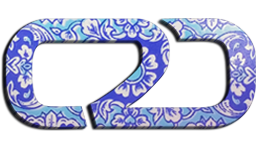It is commonly believed that once Taj Mahal was completed, Shah Jehan ordered that the thumbs of the chief builders to be cut off, so that they may not replicate the beauty of the grand mausoleum. The urban folklore confirms a mythical belief that nothing durable and unique can be built without the creator’s self-sacrifice. But the legend also signifies the nature of imperial ambition — to use artists as instruments to glorify the deeds of the Kings. The court artists had to subject their creative will and destiny to the volition of his patron.
Following in the footsteps of the Mughal aristocracy, Pakistani state bureaucracy carries on with this imperial legacy of routinely summoning artists to serve as state courtiers. These state representatives view artists as instruments for their political ambitions. The artists are commissioned to undertake projects that further the ideological propaganda of the state. These artists are paid for their services as servants of the state and are regularly decorated for their contribution to the national glory.
For Pakistani state bureaucracy, artists from the entertainment industry are cultural props for state events. The ceremonial presence of performing artists at these events is needed only to mark national rituals and official ceremonies of the state.
Our social attitudes towards the artist are steeped in a feudal mindset. This is reflected in the derogatory connotations associated with terms used to refer to performing, visual and other kinds of artists.
Type cast by their origin, Pakistani artists are treated as merchants of aesthetics not as secular prophets of a brave new world. They are never called by the state to portray hidden perspectives, to show alternate visions of reality, or to leverage Arts for the cause of social change.
The state’s neglect of artists is not reserved for those who challenge the state orthodoxy through their art work. Such attitude is meted out equally to those who are considered to be the founders of Islamic art in Pakistan — such as Abdur Rehman Chughtai. As a close companion of Sir Muhmmad Iqbal, Chughtai had promised to fulfill Iqbal’s wish to illustrate his poetry in the same way that he had illustrated and litho-printed the poetry of Ghalib.
The legend of the Chughtai family was also built on the impeachable scholarship of Chughtai’s elder brother Abdullah Chughtai, an Islamic art historian with a doctorate in philosophy (PhD) from France. Allama Iqbal used to affectionately call him “Master Je” Chughtai.
In 1934, Abdur Rehman Chughtai had been decorated as Khan Bhadur by the British Indian Empire. Later, he received highest national awards including Hilal-i-Imtiaz in 1959 and Pride of Performance Award in 1968. Having earned a stature equivalent to the national painter of Pakistan, Chughtai’s paintings were given to the visiting heads of state as national souvenirs. His paintings have been displayed at leading international museums such as Victoria and Albert Museum and have remained in high demand at international auction houses.
It might have been a befitting acknowledgement of Chughtai’s monumental contribution to Pakistani art to establish a museum to house his private archival collection as well as his most coveted painting, and original illustrated manuscripts.
However, the state’s apathy to artists knows no ideological bounds. Without a land grant from the government, the indefatigable Chughtai had decided to single-handedly establish a museum in Lahore. He died fighting with the Lahore Development Authority in 1975 over property rights to the land on which he had established the Chughtai Museum with his own expense. Many decades later, his son Arif Chughtai now carries his legacy alone by himself and struggles with dignity to keep the Chughtai Museum from coming under the axe.
The only exception to the lack of government patronage to Pakistani artists has been the Shakir Ali Museum — though not a single penny was spent on its construction by the Government of Pakistan.
After his death in 1975, Shakir Ali’s house was handed over by his descendants to the Pakistan National Council of Arts (PNCA). Presently, it houses his personal belongings and his art works.
There are a number of artists whose names have been forgotten, their imaginative acts not remembered, and their creative signature erased from our history. The voluminous records of the proceedings of the Civil Awards Committee of the Cabinet Division contained details of scores of nominated artists but these were scrapped due to lack of patronage.
One such nomination was of Mehraj Khan, an artist from Dera Ghazi Khan. He was credited to have designed the state emblem, which was officially adopted by the Constituent Assembly in 1954. His name was dropped out of the list of civil awards for the year and his case file was put to rest — to eternally rust in the dustbins of history.
Not much is known about him beyond the fact that Mehraj Khan had a diploma in Commercial Art from the famous Mayo School of Arts, Lahore, presently known as the National College of Arts. Mehraj Khan remains uncelebrated to date. It is ironic that someone with the singular honour of designing the national emblem of the state of Pakistan lived and died in anonymity. Though the state emblem he designed continues to adorn every scrap of official document, including the one on which his rejection for civil awards was filed.


The writer is an anthropologist, former Director of National College of Arts, Rawalpindi campus, currently working for the Center for Culture and Development (C2D), Islamabad & Vice President of the Council of Social Sciences.
